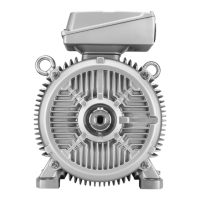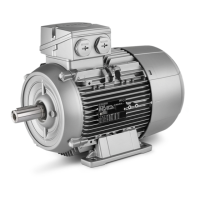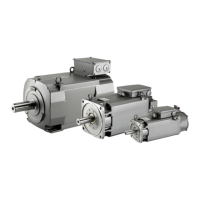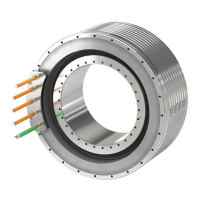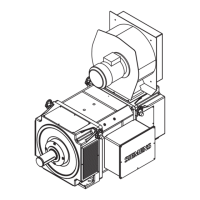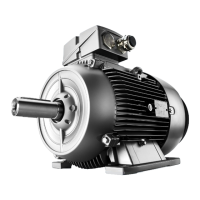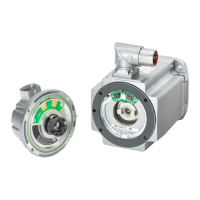Configuration
5.3 Examples
1FN3 linear motors
126 Configuration Manual, 10/2018, 6SN1197-0AB86-0BP2
Calculating the required maximum force for the selected primary sections
1st iteration step
Peak load motor
1FN3100-4WC00-0BA1
The total mass to be moved m
ges
:
m
ges
= m + m
Motor
= (50 + 8.5) kg = 58.5 kg
The maximum force that the motor must supply for the duty cycle is:
F
L,MAX
= m
ges
· a + F
r
= 58.5 kg · 41 m/s
2
+ 100 N
Continuous load motor
1FN3150-3NC70-0BA1
The total mass to be moved m
ges
:
m
ges
= m + m
Motor
= (50 + 11.7) kg = 61.7 kg
The maximum force that the motor must supply for the duty cycle is:
F
L,MAX
= m
ges
· a + F
r
= 61.7 kg · 41 m/s
2
+ 100 N
L,MAX
The force of the primary sections previously selected is too low, both for the peak load motor
and the continuous load motor. Therefore, a new primary section has to be selected.
2nd iteration step
New, improved motor selection for the example (see motor data sheets):
m
Motor
(with precision cooler)
Peak load motor 1FN3100-5WC00-0BA1
109 m/min
2750 N
10.4 kg
Peak load motor
1FN3100-5WC00-0BA1
1FN3150-4WC00-0BA1
m
ges
= 60.4 kg
F
L,MAX
= 2576 N (no control reserve)
m
ges
= 61.4 kg
F
L,MAX
= 2617 N (10% control reserve present)
(calculation uses same approach as in the 1st iterative step)
Continuous load motor
1FN3150-4NB80-0BA1
m
ges
= 65.3 kg
F
L,MAX
= 2777 N
(calculation uses same approach as in the 1st iterative step)
The further calculations in this example are performed with the peak load motor 1FN3150-
4WC00-0BA1 or the continuous load motor 1FN3150-4NB80-0BA1.
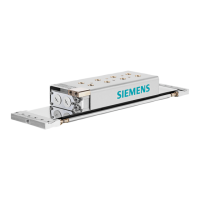
